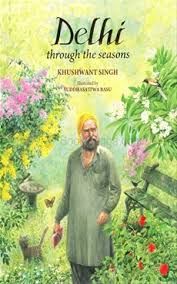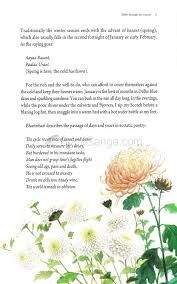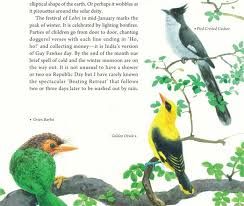Delhi Through The Seasons
Jun 17, 2019 • 14 views
The dictionary of Cambridge defines Romanticism as a style ofart, music, andliterature,popularinEuropein the late 18th and early 19thcenturies, thatdealswith thebeautyofnature and human emotions or describingthings in a way that makes themsoundmoreexciting, stirringand mysteriousthan they really are. One of the highlighting features of romanticism is an almostreligious response to nature. Nature is just not seen in a scientific light but as a divine living force, made by the Creator with a capacity of eliciting wonder, awe and amazement from its admirers and plunging them deep into a memory lane of the innocent days of childhood spent in the companionship of Nature. And thus, every visit down the memory lane is as fresh as a bud showered in dew.
This sense of nostalgia, afeelingofpleasure accompanied with slight sadness and longingnessat the sametimeas one thinks of beautiful events and things thatoccurredin the past is what reflects in the work of Khushwant Singh’s Delhi through the seasons. The book takes the readers through the beautiful streets of Delhi adorned with the trees of semul, bougainvillaea, pink cassia and the musical chirping of koel, golden oriole and magpie- robin which often accompany the author to his many trips to the gardens, to his tennis games or just sit there with him on a summer evening.

The city that has always been recognized as the one with a great history, culture and architecture, Khushwant Singh gives the city a very different view altogether. Beautifully describing the Baramasi pattern of environment found in the country, the readers get to see a different phase of the city altogether which today is known for its high levels of pollution and rapidly increasing rates of industrialization and fills them with a desire of visiting Singh’s Delhi.
The work is a beautiful piece of literature because of its multiple romantic lens that reflects the author’s poetic nature with a keen observant eye with which he captures those elements of nature which may seem very ordinary to a common eye but are full of beauty and joy. The simple settings, the whole ambience described, attention to very simple details is what makes the work extraordinary as it fills the readers with a sense of calmness and nostalgia as one can’t help but go down the memory lane of their beautiful childhood, where they spent their summers chasing the cats, running around the trees, eagerly waiting for the aamras to be prepared by their grandmothers or the hot sheera consumed on a foggy winter evening spent by the bonfire.
The beautiful cycle of six seasons that visit the country and the traditional baramasi pattern is what describes the city through twelve months of the year starting from the very foggy mornings of January, to the beautiful mornings of bahaar in March, to the July evenings spent dancing in the rain and the energetic days of October- November spent making Rangoli and eagerly waiting for sweets- all beautifully knitted with various stanzas and poems in translation by exceptional writers such as Guru Nanak, Bhartrihari, Kalidasa, Meer Taqi Meer and many others.
Nature- a great teacher
Throughout the book, Khushwant Singh talks about the ways nature works and just how much a person can learn from it. All one needs is an observant eye and a reflective mind. And all these lessons come to him in the form of various seasons and months of the Nature. He draws a beautiful parallel between life and death. A very important feature of the Nature- coexistence of life and death, where there’s life there is death, a truth we all know but either forget or chose to ignore. Khushwant Singh very beautifully explains the importance of every living thing, he says that every creation of Nature, regardless of its origin is of some importance or the other. No being can be called useless. He gives a very beautiful example of the scarlet and orange flowered semul tree, which he refers to as the messenger of spring and chooses to ignore all the facts of it being “useless” as all the other poets call it so.

Reflections of romanticism
The author is a true lover and a romantic at heart when it comes to Nature. The vivid description of every process of nature and nature itself is done in a such a beautiful way with multiple uses of imagery, metaphors, onomatope and simile. Khushwant Singh has very beautifully compared the chirping of the birds which he graciously calls them his companions to his tennis games, to a melodious orchestra which presents a new routine every season- Oh! How delightful. He calls nature enchanting and full of splashes of different colours, wherever you look at.
Khushwant Singh’s specialty lies in putting in life to his words. The author has described summer evenings in a very beautiful and poetic way. To him a typical summer evening smells of bitter sweet perfume of keekar flowers wafted in the air. to explain further he gives yet another reference to Bhasa’s poem from his work Avimaraka,
“How enchanting is the great variety of the earth!
Gone is the heat of the day as earth dresses for the night;
The evening breeze of this strange world gently the body touches.
Slowly she removes the sun from her forehead,
Quietly puts around her neck a garland of stars,
Scatters the brave throughout the sleeping city
And joins together the bodies of young lovers. (Avimaraka, Love’s Enchanted World, translated by J.L. Masson and D.D. Kosambi)
Reflections of Nostalgia
Along with the continuously flowing streak of romanticism and beautiful metaphors, there are various beautiful instances of nostalgia not only given by the author but also the ones experienced by the readers as well.The month of June brings in a strong sense of nostalgia and one definitely feels like going back to their joyous and carefree childhood days, because June is synonymous with mangoes especially with us Indians. Indians are famous to be staunch devotees of the king of all fruits- mangoes, aamrai- be it the Tughluq emperors, Rajput Kings or a common man. Throwing stones at the tree, selecting the best varieties, then bargaining for the price, making aamras and aam ka achar from the kachhi kairi- who isn’t remined of one’s home?
Conclusion
The book Delhi through the seasons gives us a very different Khushwant Singh. We have always known him majorly as a partition writer with his writings full of the horrors and tragedies of the unfortunate period of the partition. Woven through the text with simple and enchanting language are the beautiful use of metaphors, vivid imagery, romanticism, wonderful memories of childhood, multiple references from various poets- both Sanskrit and English, translated texts and a beautiful tour of the city through the multiple variety if flora and fauna. But the book comes as a refreshing surprise as one is left amazed by Khushwant Singh’s immense knowledge about nature and the way he perceives it is beautiful. Singh’s proof of a true romantic at heart is vividly reflected through the wonderful comparisons drawn and beautiful description of nature, which is sure to leave one enchanted.

